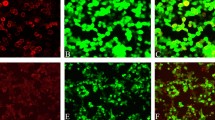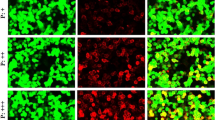Abstract
Background
Contactin-associated protein-like 2 (CASPR2) autoantibody disease has a variable clinical phenotype. We present a case report and performed a systematic review of the literature to summarize: (1) the clinical phenotype of patients with CASPR2 antibodies, (2) the findings in neurological investigations, and (3) the associated neuroimaging findings.
Methods
A chart review was performed for the case report. A systematic review of the medical literature was performed from first available to June 13, 2018. Abstracts were screened, and full-text peer-reviewed publications for novel patients with CASPR2 positivity in serum or cerebrospinal fluid (CSF) were included. Selected publications were reviewed, and relevant information was collated. Data were analyzed to determine overall frequency for demographic information, clinical presentations, and investigation findings.
Results
Our patient was a previously healthy 61-year-old male with both serum and CSF CASPR2 antibodies who presented with limbic encephalitis and refractory epilepsy. He was successfully treated with immunosuppression. For our systematic review, we identified 667 patients from 106 studies. Sixty-nine percent were male. Median age was 54 years (IQR 39–65.5). Median disease duration was 12 months (IQR 5.6–20). Reported overall clinical syndromes were: autoimmune encephalitis [69/134 (51.5%)], limbic encephalitis [106/274 (38.7%)], peripheral nerve hyperexcitability [72/191 (37.7%)], Morvan syndrome [57/251 (22.7%)], and cerebellar syndrome [24/163 (14.7%)]. Patients had positive serum [642/642 (100%)] and CSF [87/173 (50.3%)] CASPR2 antibodies. MRI was reported as abnormal in 159/299 patients (53.1%), and the most common abnormalities were encephalitis or T2 hyperintensities in the medial temporal lobes, or hippocampal atrophy, mesial temporal sclerosis, or hippocampal sclerosis. FDG-PET was abnormal in 30/35 patients (85.7%), and the most common abnormality was temporomesial hypometabolism. The most commonly associated condition was myasthenia gravis (38 cases). Thymoma occurred in 76/348 patients (21.8%). Non-thymoma malignancies were uncommon [42/397 (10.6%)].
Conclusions
Most patients have autoimmune or limbic encephalitis and corresponding abnormalities on neuroimaging. Other presentations include peripheral nerve hyperexcitability or Morvan syndromes, cerebellar syndromes, behavioral and cognitive changes, and more rarely movement disorders. The most commonly associated malignancy was thymoma and suggests a role for thymoma screening in CASPR2-related diseases.

Similar content being viewed by others
Abbreviations
- CASPR2:
-
Contactin-associated protein-like 2
- CIDP:
-
Chronic inflammatory demyelinating polyneuropathy
- CJD:
-
Creutzfeldt–Jakob disease
- CSF:
-
Cerebrospinal fluid
- CT:
-
Computed tomography
- C/T/L:
-
Cervical, thoracic, lumbar
- EEG:
-
Electroencephalogram
- EMG:
-
Electromyography
- FDG-PET:
-
Fluorodeoxyglucose positron emission tomography
- IQR:
-
Interquartile range
- IVIG:
-
Intravenous immunoglobulin
- LGI1:
-
Leucine-rich gene, glioma inactivated
- MoCA:
-
Montreal Cognitive Assessment
- MRI:
-
Magnetic resonance imaging
- NMDA:
-
N-methyl-D-aspartate
- NOS:
-
Not otherwise specified
- SIADH:
-
Syndrome of inappropriate antidiuretic hormone secretion
- VGKC:
-
Voltage-gated potassium channel
References
Saint-Martin M, Joubert B, Pellier-Monnin V, Pascual O, Noraz N, Honnorat J (2018) Contactin-associated protein-like 2, a protein of the neurexin family involved in several human diseases. Eur J Neurosci 48:1906–1923
Lai M, Huijbers MG, Lancaster E, Graus F, Bataller L, Balice-Gordon R, Cowell JK, Dalmau J (2010) Investigation of LGI1 as the antigen in limbic encephalitis previously attributed to potassium channels: a case series. Lancet Neurol 9(8):776–785
Irani SR, Alexander S, Waters P et al (2010) Antibodies to Kv1 potassium channel-complex proteins leucine-rich, glioma inactivated 1 protein and contactin-associated protein-2 in limbic encephalitis, Morvan’s syndrome and acquired neuromyotonia. Brain 133(9):2734–2748
Bien CG, Mirzadjanova Z, Baumgartner C, Onugoren MD, Grunwald T, Holtkamp M, Isenmann S, Kermer P, Melzer N, Naumann M, Riepe M, Schabitz WR, von Oertzen TJ, von Podewils F, Rauschka H, May TW (2017) contactin-associated protein-2 encephalitis: relevance of antibody titres, presentation, and outcome. Eur J Neurol 24(1):175–186
Gadoth A, Pittock SJ, Dubey D, McKeon A, Britton JW, Schmeling JE, Smith A, Kotsenas AL, Watson RE, Lachance DH, Flanagan EP, Lennon VA, Klein CJ (2017) Expanded phenotypes and outcomes among 256 LGI1/CASPR2-IgG-positive patients. Ann Neurol 82(1):79–92
van Sonderen A, Ariño H, Petit-Pedrol M, Leypoldt F, Körtvélyessy P, Wandinger KP, Lancaster 1, Wirtz PW, Schreurs MW, Sillevis Smitt PA, Graus F, Dalmau J, Titulaer MJ. The clinical spectrum of Caspr2 antibody-associated disease. Neurology. (2016); 87(5): 521–8.
Joubert B, Gobert F, Thomas L, Saint-Martin M, Desestret V, Convers P, Rogemond V, Picard G, Ducray F, Psimaras D, Antoine JC, Delattre JY, Honnorat J (2017) Autoimmune episodic ataxia in patients with CASPR2 antibody-associated encephalitis. Neurol Neuroimmunol Neuroinflamm 4(4):e371
Dahm L, Ott C, Steiner J, Stepniak B, Teegen B, Saschenbrecker S, Hammer C, Borowski K, Begemann M, Lemke S, Rentzsch K, Probst C, Martens H, Wienands J, Spalletta G, Weissenborn K, Stöcker W, Ehrenreich H (2014) Seroprevalence of autoantibodies against brain antigens in health and disease. Ann Neurol 76(1):82–94
Klein CJ, Lennon VA, Aston PA, McKeon A, O'Toole O, Quek A, Pittock SJ (2013) Insights from LGI1 and CASPR2 potassium channel complex autoantibody subtyping. JAMA Neurol 70(2):229–234
Klein CJ, Lennon VA, Aston PA, McKeon A, Pittock SJ (2012) Chronic pain as a manifestation of potassium channel-complex autoimmunity. Neurology 79(11):1136–1144
Binks S, Varley J, Lee W, Makuch M, Elliott K, Gelfand JM, Jacob S, Leite MI, Maddison P, Chen M, Geschwind MD, Grant E, Sen A, Waters P, McCormack M, Cavalleri GL, Barnardo M, Knight JC, Irani SR (2018) Distinct HLA associations of LGI1 and CASPR2-antibody diseases. Brain 141(8):2263–2271
Moher D, Liberati A, Tetzlaff J, et al. Preferred reporting items for systematic reviews and meta-analyses: The PRISMA statement. PLoS Med. 2009;6(7).
Zekeridou A, McKeon A, Lennon VA (2016) Frequency of synaptic autoantibody accompaniments and neurological manifestations of thymoma. JAMA Neurol. 73(7):853–859
Nagappa M, Mahadevan A, Sinha S et al (2017) Fatal Morvan syndrome associated with myasthenia gravis. Neurologist. 22(1):29–33
Song J, Jing S, Quan C et al (2017) Isaacs syndrome with CASPR2 antibody: A series of three cases. J Clin Neurosci. 41:63–66
Dawes JM, Weir GA, Middleton SJ et al (2018) Immune or Genetic-Mediated Disruption of CASPR2 Causes Pain Hypersensitivity Due to Enhanced Primary Afferent Excitability. Neuron 97(4):806–822.e10
Balint B, Regula JU, Jarius S, Wildemann B (2013) Caspr2 antibodies in limbic encephalitis with cerebellar ataxia, dyskinesias and myoclonus. J Neurol Sci. 327(1–2):73–74
Salvador A, Pujadas F, Dalmau J et al (2013) Determination of Neuronal Antibodies in Suspected and Definite Creutzfeldt-Jakob Disease. JAMA Neurol. 71(1):74
Maat P, Beukelaar JW, Jansen C et al (2015) Pathologically confirmed autoimmune encephalitis in suspected Creutzfeldt-Jakob disease. Neurol - Neuroimmunol Neuroinflammation. 2(6):e178
Zuhorn F, Hubenthal A, Rogalewski A et al (2014) Creutzfeldt-Jakob disease mimicking autoimmune encephalitis with CASPR2 antibodies. BMC Neurol. 14(1):227
Rossi M, Mead S, Collinge J, Rudge P, Vincent A (2015) Neuronal antibodies in patients with suspected or confirmed sporadic Creutzfeldt-Jakob disease. J Neurol Neurosurg Psychiatry. 86(6):692–694
Broadley J, Seneviratne U, Beech P et al (2018) Prognosticating autoimmune encephalitis: A systematic review. J Autoimmun. 2019(96):24–34
Vanli-Yavuz EN, Erdag E, Tuzun E, et al. Neuronal autoantibodies in mesial temporal lobe epilepsy with hippocampal sclerosis. J Neurol Neurosurg Psychiatry. 2016;87(7):684–692.
Vincent A, Irani SR (2010) Caspr2 antibodies in patients with thymomas. J Thorac Oncol. 5(10 SUPPL. 4):277–280
Irani SR, Pettingill P, Kleopa KA et al (2012) Morvan syndrome: Clinical and serological observations in 29 cases. Ann Neurol. 72(2):241–255
Fleisher J, Richie M, Price R et al (2013) Acquired Neuromyotonia Heralding Recurrent Thymoma in Myasthenia Gravis. JAMA Neurol. 70(10):1311–1314
Abgrall G, Demeret S, Rohaut B et al (2015) Status dissociatus and disturbed dreaming in a patient with Morvan syndrome plus myasthenia gravis. Sleep Med. 16(7):894–896
Torres-vega E, Mancheno N, Cebrian-Silla A, et al. Netrin-1 receptor antibodies in thymoma-associated neuromyotonia with myasthenia gravis. 2017;88(13):1235–1242.
Hines H, Murray NM, Ahmad S, Jaradeh S, Gold CA (2018) Video NeuroImages: Paraneoplastic spinal myoclonus associated with Caspr2 antibodies. Neurology. 90(14):660–661
Laurencin C, Andre-Obadia N, Camdessanche JP, Maugiere F, Ong E, Vukusic S, Peter-Derex L, Meyronet D, Bouhour F, Vial C, Ducray F, Honnorat J, Petiot P (2015) Peripheral small fibre dysfunction and neuropathic pain in patients with Morvan syndrome. Neurology 85(23):2076–2078
Kaufman AJ, Palatt J, Sivak M et al (2016) Thymectomy for Myasthenia Gravis: Complete Stable Remission and Associated Prognostic Factors in Over 1000 Cases. Semin Thorac Cardiovasc Surg. 28(2):561–568
Wolfe GI, Kaminski HJ, Aban IB et al (2016) Randomized trial of thymectomy in myasthenia gravis. N Engl J Med. 375(6):511–522
Höftberger R, Rosenfeld MR, Dalmau J (2015) Update on neurological paraneoplastic syndromes. Curr Opin Oncol. 27(6):489–495
Acknowledgements
The authors would like to thank Dr. Christine P. Molnar for assistance in acquiring and interpreting the FDG-PET images and Ms Helen Lee Robertson for her assistance with the search strategy for the systematic literature review.
Funding
This was not a funded study.
Author information
Authors and Affiliations
Contributions
M.B. analyzed clinical data, performed the systematic literature review, and drafted the manuscript. K.K.A. analyzed clinical data, performed the systematic literature review, and edited the manuscript for intellectual content. C.C. analyzed clinical data and edited the manuscript for intellectual content. P.d.R. analyzed clinical data and edited the manuscript for intellectual content. G.P. analyzed clinical data, edited the manuscript for intellectual content, and supervised the study. All authors read and approved the final manuscript.
Corresponding author
Ethics declarations
Conflicts of interest
All authors declare there are no competing interests with this study.
Ethics approval and consent to participate
Institutional research ethics board approval was not obtained for this study.
Consent for publication
The participant provided written informed consent for publication of this case report.
Electronic supplementary material
Below is the link to the electronic supplementary material.
Rights and permissions
About this article
Cite this article
Boyko, M., Au, K.L.K., Casault, C. et al. Systematic review of the clinical spectrum of CASPR2 antibody syndrome. J Neurol 267, 1137–1146 (2020). https://doi.org/10.1007/s00415-019-09686-2
Received:
Revised:
Accepted:
Published:
Issue Date:
DOI: https://doi.org/10.1007/s00415-019-09686-2




